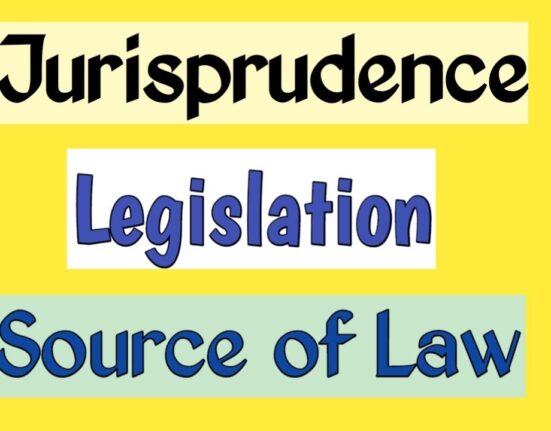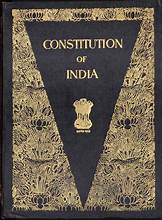Kanishka Singh, a 5th-year law student from MIT World Peace University has written this article on “Understanding Policy Settlement: Bridging the Gap for Effective Solutions”.
Introduction
Our civilization is shaped by decisions made every day, including those affecting our everyday lives as well as the laws that govern our communities. Have you ever wondered how these important choices are made? Well, the process known as “policy settlement” holds the key to the solution.
The general public frequently ignores policy settling, a crucial but underappreciated part of the government. Before policies are established and put into effect, discussion, collaboration, and compromise are the arts involved. In essence, it serves as a link between disparate interests and viewpoints to provide sensible solutions that advance society.
Imagine a complicated jigsaw where each piece stands for various stakeholders, such as elected officials, advocacy organisations, and regular people. The process of putting these elements together, identifying areas of agreement, and creating policies that deal with society’s most urgent issues is known as policy settlement.
We shall dig into the realm of policy settlement in this essay, exploring its relevance and illuminating how it influences the laws that affect our daily lives. This investigation of policy settlement will provide you useful insights into how decisions are formed, whether you are enthusiastic about social concerns, fascinated by politics, or simply inquisitive about how decisions are made.
Let’s set out on a trip to learn how policy settlement not only influences policies but also contributes to the preservation of peace and stability in a world that is always changing. Furthermore, We will negotiate the complexities of this vital process to develop a greater appreciation for the art of policymaking, from comprehending the major actors and stakeholders to analysing real-world case studies. Let’s thus start our investigation and explore the secrets of policy settling together.
Policy Settlement
The process of discussing, creating, and coming to an agreement on policies within a political or organisational environment is referred to as policy settlement. It entails bringing together a variety of interested parties in order to identify common ground and come to an understanding of the formulation and application of particular policies.
The process of settling a policy usually starts with the identification of a pressing issue or problem facing society. Participants in talks, negotiations, and consultations are recognised as stakeholders having vested interests in the issue. Divergent opinions, issues, and objectives are discussed as a result of these exchanges.
Compromises and trade-offs are made as the conversations go along to account for the diverse interests involved. Moreover, The goal is to provide policy solutions that can be successfully implemented and are supported by a variety of stakeholders. Policy resolution frequently takes shrewd diplomacy, discussion, and dedication to come up with common answers.
After a compromise is established, the suggested policy is given to the relevant decision-making bodies for additional review, discussion, and elaboration. Before taking on its final form, it may experience modifications and revisions depending on comments from interested parties and professionals.
In democratic societies, policy settlement is essential because it guarantees that policies are not imposed unilaterally but rather are the outcome of cooperative efforts that take into account the many demands and viewpoints of the community. Additionally, Policy settlement aids in consensus formation, prevents deadlock, and advances the legitimacy and acceptability of policies within society by including stakeholders and enabling open discourse.
The Importance of Policy Settlement
The area of governance and policymaking places a high value on policy settling. Its applicability may be seen in decisions made at many levels of government, in international relations, and in organisational settings. Policy settlement is essential for the following reasons:
Building Consensus and Legitimacy:
The decision-making process for policy resolution entails including a variety of stakeholders. Policies gain legitimacy and are more likely to be accepted and respected by people they are intended to effect by soliciting feedback from a variety of organisations, including professionals, interest groups, as well as the general public by encouraging a sense of ownership among stakeholders, this strategy promotes increased compliance and effective execution.
Balancing Conflicting Interests:
Conflicting interests must be balanced since societal issues frequently have several facets and competing interests. The dialogue and compromise required to create a balance between opposing viewpoints are made possible by policy settlement. As a result, policies are created that are more comprehensive and capable of meeting the requirements of various societal groups.
Avoiding Polarisation and Gridlock:
In political systems with different points of view, gridlock can impede efficient decisions. Political polarisation may be overcome and agreements that advance the policy process can be reached via the use of policy settlement. It promotes an emphasis on shared interests rather than fixed opinions.
Increasing Policy Effectiveness:
Strategies created via negotiation and settlement procedures are more likely to be realistic and efficient. Policymakers may spot possible problems, foresee unintended repercussions, and customise policies to accomplish their intended goals by incorporating ideas from stakeholders and experts.
Promoting Openness and Accountability:
The negotiation and open debate that goes into policy settlement help to increase the openness of the decision-making process. This transparency enables the general public to comprehend the justifications for policy decisions and hold decision-makers responsible for their actions.
Promoting inclusiveness and Diversity:
By including a wide variety of stakeholders, policy settling promotes inclusiveness. This inclusiveness aids in ensuring that policies take into account the requirements and preferences of many demographic groups, therefore advancing social equality and justice.
Developing Sustainable Solutions:
Settlement procedures often result in better long-term sustainable policies. Policymakers can identify possible obstacles and modify policies to reflect changing conditions by addressing stakeholders who will be affected by the policies.
Fostering Democratic Governance:
The concepts of participatory decision-making are aligned with policy settling in democratic societies. It encourages a sense of citizenship and strengthens the democratic process by empowering individuals to participate in policymaking.
Policy settlement is essential to the development of successful, moral, and long-lasting policies. Policymakers may create solutions that better serve the needs of society and contribute to a more inclusive and democratic governing process by accepting multiple viewpoints, promoting agreement, and resolving conflicting interests.
The Policy Settlement Process
The negotiation, cooperation, and decision-making processes that make up the policy settlement process are extensive and dynamic. The following are the major steps that are commonly included in policy settlement; however, specifics of the process may vary depending on the context and complexity of the policy issue:
Setting the agenda and defining the problem
The process starts with recognizing a social issue or problem that has to be addressed. This might be a brand-new obstacle to overcome, an existing issue that needs to be resolved, or a policy that needs to be changed. The public, specialists, interest groups, and policymakers may all help identify and prioritize the issues that require policy attention.
Stakeholder Analysis and Engagement
After a problem has been discovered, policymakers thoroughly analyze the stakeholder landscape to pinpoint all pertinent players and interest groups involved in the situation. These stakeholders might include corporations, advocacy groups, impacted communities, government agencies, academics, and other pertinent parties. Moreover, To comprehend their viewpoints, acquire data, and develop support for prospective policy solutions, stakeholders must be included.
Data collection and research
To get a thorough grasp of the problem’s breadth, causes, and potential remedies, policymakers gather data and carry out research. This evidence-based approach aids in the development of informed policies and the evaluation of the possible effects of various alternatives.
Policy Formulation and Development
During this stage, policymakers write policy suggestions based on the research and feedback from stakeholders, frequently assisted by experts and advisers. These suggestions could investigate other strategies and options for resolving the highlighted issue.
Discussion and Consensus Building
The various stakeholders then engage in discussion and negotiation regarding the proposed policies. During this phase, various viewpoints are presented, common ground is found, and compromises are sought. Constructing consensus and ensuring that the proposed policies are approved by a variety of stakeholders are the objectives.
Decision-Making and Adoption
Following negotiations, the body or authority charged with deciding on the matter assesses the suggested policies. A legislative assembly, the executive branch, a board of directors, or other pertinent organizations could make up this body. When the decision-making body adopts a specific policy or set of policies to address the issue, the policy settlement process is complete.
Implementation and Evaluation
A policy enters the implementation phase after it has been approved. Allocating resources, creating monitoring and evaluation systems, and putting the policy into practice are all tasks that policymakers perform. This phase checks that the policy produces the desired results and offers insightful feedback for potential adjustments or enhancements.
Feedback and iteration:
Policies are rarely static, and implementation and evaluation feedback frequently result in policy revisions or adjustments. Policymakers may go through an iterative process of fine-tuning the policy in response to practical experiences and shifting conditions.
Building trust and ensuring the success of the adopted policies requires effective communication, transparency, and stakeholder engagement throughout the entire policy settlement process. Making policy is a complex and difficult task because political, economic, and social factors also have an impact on the process.
Key Actors and Stakeholders
Different actors and stakeholders play critical roles in the policy-setting process, each contributing their opinions, interests, and domain knowledge. For successful policy formation and execution, it is crucial to comprehend the major players and stakeholders. The following are some of the major participants and stakeholders that are frequently involved:
Government Officials and Policymakers:
The process of settling on policies is led by elected officials, government representatives, and policymakers. It is their job to suggest, write, and implement policies that deal with society’s problems and difficulties. Their choices and deeds have a big impact on the process of policy settlement and how it turns out.
Interest Groups and Advocacy Organisations:
Interest groups speak out on behalf of their members’ concerns and interests in certain societal groupings. By influencing officials, giving professional advice, and gaining public support for their ideas, they play a critical part in the process of settling on policies. Various social and cultural organisations, labour unions, professional associations, and environmental organisations are examples of interest groups.
Academics and Experts
In order to help the policy-setting process, academics, experts, and scholars provide important research, data, and evidence-based insights. Their knowledge aids in the understanding of the complexity of the problems at hand and the identification of potential remedies that are supported by reliable research by policymakers.
Representatives of business and industry
Business executives and industry representatives are crucial participants, particularly when laws have an impact on the business and economic climate. They offer viewpoints on how policies might impact the economy’s growth and the private sector, as well as insights into potential obstacles and opportunities.
Non-Governmental Organisations (NGOs) and Civil Society Organisations
By advocating for a range of social and humanitarian causes, NGOs and civil society organisations play a crucial part in the formulation of public policy. They promote social justice by speaking out for issues like human rights, eradicating poverty, advancing education, and more. They also draw attention to underserved communities.
Community and Citizen Groups
The general public and local residents are crucial participants in the process of determining policy. Through their participation, policymakers can take into account the requirements and worries of the people who will be directly impacted by the policies. This can also be done through public consultations, surveys, and feedback sessions.
Journalists and the media
Journalists and news organisations, as well as the media as a whole, have a big impact on the agenda for policymaking and on how the public feels. Reporting on changes in policy, bringing issues to light, and holding decision-makers responsible for their actions are all things they do.
International Organisations and Agencies
International organisations and agencies, such as the United Nations and the World Health Organisation, may also be parties with an interest in disputes involving international or global issues. By giving perspectives on global best practices and standards, they help with the process of settling policy.
Parties in opposition and policy critics
These groups offer opposing perspectives and assessments of suggested policies. In order to ensure that policies are thoroughly examined from a variety of perspectives, it is their responsibility to closely examine governmental actions and hold decision-makers responsible for their choices.
Engaging and taking into account the interests of these various actors and stakeholders is necessary for effective policy settlement. Moreover, Policymakers can navigate the complexities of policymaking and create solutions that are more thorough, legitimate, and reflective of societal needs by encouraging open dialogue, collaboration, and inclusivity.
Challenges and Obstacles
There are difficulties and barriers in the policy settlement process. To ensure successful policy development and implementation, policymakers must overcome these obstacles, which can come from a variety of sources. The following are some typical difficulties encountered during the policy settlement process:
Diverse Interests and Conflicting Priorities:
When stakeholders with different interests and priorities are brought together, it may result in disputes and conflicts during negotiations. Finding common ground and balancing opposing points of view can be difficult, particularly when there are clashing ideologies or values.
Political polarization and partisanship:
In politically polarised settings, decision-makers may find it difficult to reach consensus-based or bipartisan agreements. The process of formulating policy can be hampered by partisan interests, which makes finding consensus and working together challenging.
Budgetary restrictions and limited resources:
Policies frequently need funding and budgetary allocations to be implemented. The scope and effectiveness of the policies may be impacted by difficult trade-offs and decisions about which policy proposals to prioritize due to a lack of resources.
Technicalities and Complexity:
Some policy issues can be very complicated, entailing intricate relationships between various factors and technical specifics. It can be difficult for policymakers to comprehend and articulate the complexities of such issues, and they may need expert advice.
Influence of Special Interest Groups:
Special interest groups with significant financial and political clout can have a big impact on how policies are decided. Their disproportionate influence may result in laws that favor their interests over those of the general populace.
Goals:
Policymakers frequently struggle to strike a balance between immediate needs and long-term objectives. Short-term gains may be given priority over long-term and forward-looking policies due to immediate political pressures.
Public Opinion and Populism:
Especially in democratic systems, public opinion, and populist sentiments can influence policymakers’ decisions. Public participation is crucial, but making decisions solely based on what will be popular in the short term may not always produce the best policies.
Inertia and bureaucratic red tape:
These factors can make the process of settling insurance claims more drawn out. Government institutions’ bureaucracy and inertia may impede and delay the implementation of policies.
Resistance to Change:
Stakeholders who favor maintaining the status quo may oppose any significant policy change. It can be difficult to overcome resistance to change and persuade stakeholders of the advantages of new policies.
Global events and external influences
It has the potential to significantly affect domestic policies. Policymakers may need to modify their approaches to policy due to changes in the economy, international conflicts, and unforeseeable crises.
Addressing such challenges requires effective leadership, strong communication, transparency, and a commitment to inclusive decision-making. Furthermore, Policymakers must actively engage stakeholders, consider evidence-based solutions, and be willing to navigate complexity to achieve policy settlements that promote the greater good and long-term societal well-being.
Case Studies
Implementation of the Goods and Services Tax (GST)
One of India’s most significant tax reforms, the GST sought to harmonize the complicated indirect tax structure of the nation. The federal government, state governments, and various business and industry stakeholders all worked together on it. Furthermore, To allay the concerns of the states regarding revenue loss and to ensure a smooth transition to the new tax system, the policy settlement process required extensive negotiations and compromise.
Land Acquisition and Rehabilitation
Farmers and communities impacted by development projects frequently resisted the acquisition of land. The 2013 Land Acquisition Act sought to strike a balance between the need for development and the protection of landowners’ rights. To address concerns about equitable compensation and rehabilitation, the act was amended numerous times during the policy settlement process, taking into account input from various stakeholders.
Right to Information (RTI) Act
The Right to Information (RTI) Act was passed in 2005 with the intention of fostering accountability and transparency in governmental operations. Media, activists, and civil society organizations were instrumental in promoting the act’s passage. In order to ensure that the act empowers citizens to access information while respecting the government’s legitimate interests, a thorough consultation and discussion process was used to establish the policy.
Renewable Energy Policies
In order to address energy security and climate change, India has been actively promoting renewable energy. Further, With input from industry stakeholders, environmental experts, and financial institutions, policies promoting the development of solar and wind energy underwent policy settlements. Moreover, The agreements sought to strike a balance between promoting the expansion of renewable energy sources and resolving issues with grid integration and financing.
Right to Education Act (RTE)
The goal of the 2009-passed RTE Act was to make education for kids ages 6 to 14 free and required. To address implementation issues, guarantee quality education, and efficiently allocate resources, the policy settlement process involved consultations with state governments, educational experts, and civil society organizations.
Healthcare Reforms
India has been working to make improvements to its healthcare system so that it can offer services that are both accessible and reasonably priced. Moreover, Collaboration between the federal and state governments, medical practitioners, and non-governmental organisations has been key in policy settlements relating to health insurance programmes, public health infrastructure, and disease control.
Affordable Care Act (ACA) in the United States
Millions of Americans now have more access to affordable healthcare thanks to the Affordable Care Act, which was passed into law in 2010. Due to the sharply divided political environment and the variety of interests within the healthcare sector, the policy settlement process for the ACA was met with considerable difficulties.
Paris Agreement on Climate Change
A significant international agreement aimed at limiting global warming and combating climate change is the Paris Agreement, which was adopted in 2015. Nearly 200 nations with a range of priorities and interests participated in negotiations to reach an agreement on policy.
Benefits and Drawbacks
The collaborative and inclusive process of policy settlement has both advantages and disadvantages. It is essential to comprehend these components in order to evaluate their strengths and weaknesses. The following are some of the main advantages and disadvantages of policy settlement:
Benefits
Inclusivity and Representation:
In order to ensure that a wide range of perspectives and interests are taken into account, policy settlement requires involving diverse stakeholders. This inclusiveness improves the representation of various groups, which results in policies that are better suited to address societal needs.
Building Consensus and Legitimacy:
Policy settlement creates consensus among stakeholders by looking for common ground and making concessions on opposing viewpoints. This consensus also increases the legitimacy of policies, encouraging support from the general public and compliance.
Effective Policy Design:
Involving experts and stakeholders in the formulation of policies enables the use of practical, fact-based decision-making. This raises the possibility that policies will be successful in resolving the issues found.
Avoiding Political Polarisation and Gridlock:
By encouraging cooperation and collaboration among competing interests, policy settlement can aid in avoiding political polarisation and gridlock. As a result, policy outcomes are timelier and more effective.
Social Acceptance and Ownership:
Policies created through a participatory process are more likely to be accepted and embraced by the general public. Stakeholder participation fosters a sense of responsibility and ownership among those who are impacted by the policies.
Balanced Trade-Offs:
Policy settlement makes it easier to negotiate compromises between divergent interests. Moreover, This aids in finding a middle ground that balances various factors and stays away from extreme policy positions.
Drawbacks
Time-consuming Process:
The need for protracted negotiations, consultations, and consensus-building makes policy settlement a time-consuming process. This could impede the implementation of policies, particularly in emergency situations.
Compromised Effectiveness:
Compromise may result in policies that are less effective because they don’t fully address the underlying causes of the problems they are intended to address, even though the compromise is necessary for policy settlement. Over-compromise can reduce a policy’s effectiveness.
Influence of Special Interests:
During the process of settling a policy, strong interest groups may have a disproportionate amount of influence. This might result in decisions that favor these groups over the interests of the entire society.
Complexity and bureaucracy:
Involving numerous stakeholders may result in difficult negotiations and obstacles from the bureaucracy. Policies may become overly complex as a result of balancing various viewpoints and meeting various demands.
Marginalized Groups Underrepresented in Policy Settlement Process:
Despite efforts to include a variety of viewpoints, some marginalized groups may still be underrepresented in policy settlement. Because of this, policies may not adequately address their particular needs.
Risk of Stagnation:
Instead of bold, transformative policies, policy settlement may result in small, gradual changes. Significant reforms may face resistance from stakeholders who would rather keep things as they are.
In conclusion, policy settlement fosters inclusivity, consensus-building, and efficient policy design, all of which have numerous advantages. However, it also has drawbacks like drawn-out negotiations, diminished effectiveness, and the potential for special interest influence. Further, To create strong, effective policies that serve the larger public interest, policymakers must carefully balance the benefits and drawbacks of policy settlement.
Policy Settlement vs. Policy Imposition
Two distinct approaches to policymaking—policy settlement and policy imposition—have different natures, workings, and results. In order to assess these approaches’ implications for governance and societal impact, it is crucial to understand their differences. Here is a comparison between policy imposition and settlement:
Policy Settlement:
Collaborative Approach:
Negotiations and discussions about policy involve many stakeholders, including government officials, interest groups, professionals, and the general public. This process is collaborative and inclusive.
Building Consensus:
The main objective of policy settlement is to achieve consensus among stakeholders. It places a focus on reaching agreements and making concessions in order to develop policies that can satisfy a variety of interests.
Integrity:
When policies are settled, different viewpoints are taken into account, giving various societal groups a voice. It aims to promote social equity and respond to the needs of various stakeholders.
Legitimacy:
Because settlement processes take into account the opinions of those who will be impacted by the policies, the legitimacy and public acceptance of the policies are frequently increased.
Time-consuming:
The need for extensive stakeholder consultations and negotiations makes policy settlement a potentially drawn-out process.
Policy Settlement May Lead to Incremental Changes:
As stakeholders might be hesitant to support more radical reforms, policy settlement may result in incremental policy changes.
Policy Imposition:
Top-Down Approach:
When a central authority imposes policy, decisions are made without extensive input from stakeholders or public consultation.
Authority-Centric:
The policy is imposed on the affected population without their direct input and the decision-making authority holds significant power in this process.
Limited Input:
Imposing policies without taking into account the various viewpoints and interests of stakeholders could lead to policies that fail to address some societal needs.
Enforcement:
Directives that are imposed from above may encounter opposition and fall short of achieving the same level of popular support as those that are the result of cooperative processes.
Faster Implementation:
Because it avoids the difficulties of negotiating with numerous stakeholders, imposing a policy can hasten its implementation.
Potential for Backlash:
People who are impacted by imposed policies may oppose them and take action against them, which could make it difficult to put them into effect and cause public unrest.
In order to reach a consensus and take into account various viewpoints, policy settlement involves a collaborative and inclusive process. Legitimacy, inclusivity, and widespread support are highlighted. Alternatively, policy imposition relies on top-down decision-making and may result in quicker implementation, but it lacks the widespread acceptance and inclusivity connected with policy settlement. The decision between these strategies depends on the unique context and how important it is to strike a balance between the need for effectiveness and the value of stakeholder involvement in the policymaking process.
Conclusion
The process of policy settlement, in sum, stands as a potent and inclusive approach to policymaking, fostering collaboration and building consensus among various stakeholders. Policy settlement produces policies that are more reflective of societal needs and problems because it places a strong emphasis on dialogue, compromise, and inclusivity.
Policy settlement’s significance cannot be overstated. It encourages the legitimacy, acceptance, and ownership of policies, facilitating their implementation and enhancing their social impact.
Settlement of policies does present some difficulties, though. It can be difficult and time-consuming to deal with divergent interests, political polarisation, and conflicting priorities. However, For policymakers, finding a balance between inclusivity and effectiveness is a constant challenge.
In contrast, policy imposition may not have the broad support and complex viewpoints that come with policy settlement, despite the fact that it may be more expedient. Policies that are imposed unilaterally run the risk of alienating stakeholders and may be insufficient to address the complex realities of society.
Recognizing the advantages of policy settlement and minimizing its drawbacks are essential for achieving meaningful and long-lasting change as we navigate the complexities of policymaking. Moreover, Policymakers can maximize the potential of policy settlement to create a more equitable, just, and prosperous society by encouraging open dialogue, respecting differing viewpoints, and embracing evidence-based decision-making.
The success of policy settlement ultimately depends on its capacity to unite diverse viewpoints, identify common ground, and steer policy discussions in the direction of solutions to today’s most pressing problems. Adopting this strategy holds the promise of bridging gaps, overcoming divisions, and producing laws that truly embody collaborative governance. As we set out on this journey, policymaking has a promising future thanks to the values of inclusion, openness, and common good pursuit.
Also Read: Salient Features of Constitution of India, Click Here!
Reference
- https://www.ris.org.in/sites/default/files/Opinions-Comments/E-book%20-%20Economic%20Reasoning%20and%20Public%20Policy%20Case%20Studies%20from%20India.pdf
- https://www.younglives-india.org/basic-page/
- https://www.ibef.org/research/
- https://www.icmrindia.org/casestudies/Case_Studies_Concept_Wise.asp?cat=Public%20policy
- https://www.wikipedia.org/
![]()







Leave feedback about this